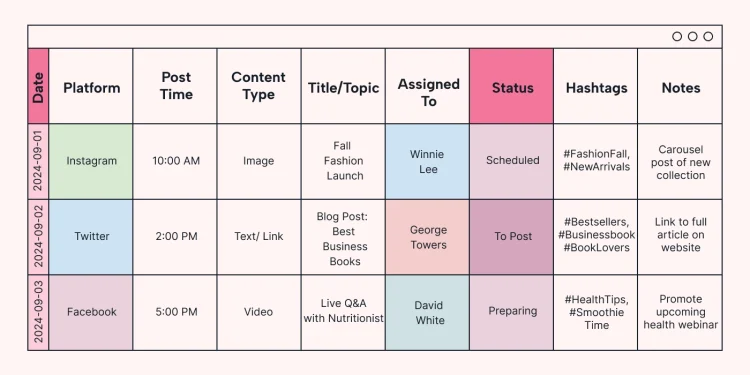A content calendar isn’t just a spreadsheet—it’s your secret weapon to stay organized, consistent, and creative across your blog, social media, or business channels. Whether you’re a solo creator or part of a marketing team, a content calendar turns chaos into strategy.
📌 What Is a Content Calendar?
A content calendar is a planning document (digital or physical) that outlines:
- What content you’re posting
- Where you’re posting it (e.g., blog, Instagram, YouTube)
- When it goes live
- Who is responsible for creating/posting it
🎯 Why You Need One
- ✅ Stay consistent
Consistency builds trust and audience growth. - ✅ Avoid last-minute stress
Know what to post in advance—no more scrambling for ideas. - ✅ Plan around key dates
Align content with product launches, holidays, or trends. - ✅ Improve quality
With time to plan, your content will be more thoughtful and polished. - ✅ Track performance
You can see what works and optimize future posts.
🛠️ How to Build a Content Calendar
1. Define Your Goals
What are you trying to achieve? (Traffic, engagement, leads, education?)
2. Choose Your Channels
Where will you publish content? (Blog, Instagram, LinkedIn, email, etc.)
3. Pick a Format
Use tools like:
- Google Sheets or Notion
- Trello, Asana, or Airtable
- Scheduling tools like Buffer, Later, or ContentStudio
4. Map Out Themes & Topics
Brainstorm categories or themes (e.g., Motivation Mondays, Tutorial Tuesdays). Use content pillars to stay on-brand.
5. Assign Dates & Deadlines
Decide when each piece will go live. Include deadlines for drafts, reviews, and publishing.
6. Include Key Details
For each post, include:
- Title
- Format (reel, blog post, infographic)
- Author/responsible person
- Publishing platform
- Status (idea, draft, scheduled, published)
✨ Pro Tips
- Reuse and repurpose content across platforms.
- Leave room for spontaneous/trending posts.
- Review your calendar weekly or monthly.
- Track analytics to refine your strategy.
🧩 Final Thoughts
A content calendar turns content chaos into a well-oiled machine. It gives you clarity, structure, and momentum. Start simple, be flexible, and evolve as your content grows.
































































